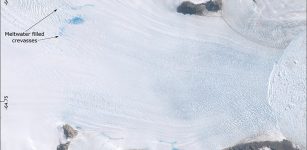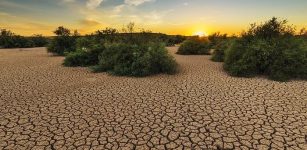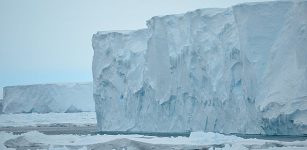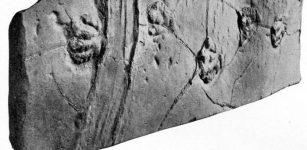Dangerous Thwaites Glacier: Drilling In Remote And Hostile Areas Of West Antarctica
Eddie Gonzales Jr. – MessageToEagle.com – Will Thwaites Glacier collapse in the next few decades and affect future global sea-level rise?
Researchers from the US and UK have successfully completed scientific fieldwork in one of the most remote and hostile areas of West Antarctica. The collected data will help to determine whether this dramatic event can occur or not.
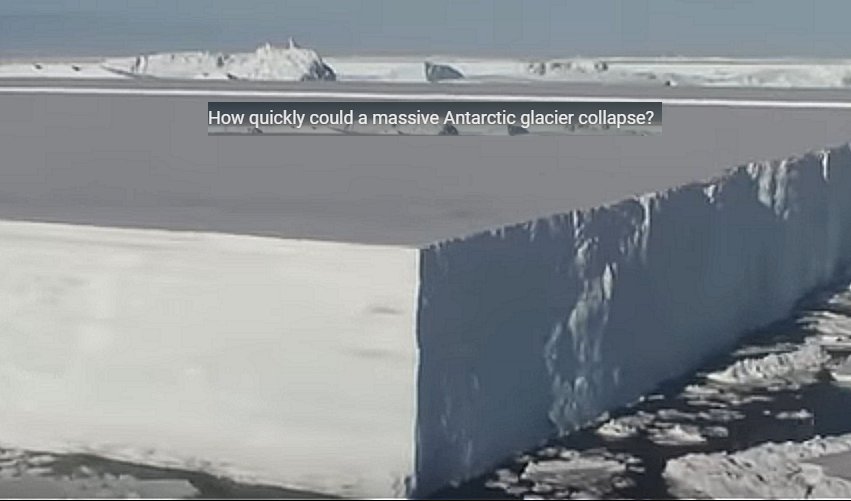 Image credit: Thwaites Glacier
Image credit: Thwaites Glacier
Thwaites Glacier, covering 192,000 square kilometers (74,000 square miles) an area the size of Florida or Great Britain, is particularly susceptible to climate and ocean changes.
Over the past 30 years, the amount of ice flowing out of Thwaites and its neighboring glaciers has nearly doubled.
Already, ice draining from Thwaites into the Amundsen Sea accounts for about four percent of global sea-level rise. A run-away collapse of the glacier would lead to a significant increase in sea levels of around 65cm (25 inches) and scientists want to find out how quickly this could happen.
For the last two months, five dedicated teams of scientists and engineers have been working on Thwaites Glacier in extreme weather conditions.
Two of these teams have used hot water to drill between 300 and 700 meters through the ice to the ocean and sediment beneath.
The MELT team drilled two places beneath the glacier using hot water, including within two kilometers of the grounding zone, the area where the glacier meets the sea. The TARSAN team drilled at two locations about 30 kilometers further out on the floating shelf to explore the oceanographic conditions beneath the ice.
The GHC team drilled four bedrock cores using a Winkie drill. At the grounding zone site a series of instruments were fed through the borehole – including the small yellow under-ice robot, Icefin, which collected data on how the glacier interacts with the ocean and the underlying sediments. Another team (THOR) also extracted five meter-long cores of soft sediment by lowering a metal tube through the two holes in the ice and driving it into the muddy sediment below. This will reveal the past history of the glacier.
“We designed Icefin to be able to access the grounding zones of glaciers, places where observations have been nearly impossible, but where rapid change is taking place,” lead scientist for Icefin, Dr. Britney Schmidt from Georgia Institute of Technology in Atlanta, who’s still working in Antarctica, said a in press release.
“To have the chance to do this at Thwaites Glacier, which is such a critical hinge point in West Antarctica, is a dream come true for me and my team. The data couldn’t be more exciting.”
Dr Keith Nicholls, an oceanographer from the British Antarctic Survey and the UK lead on the MELT team said:
“We know that warmer ocean waters are eroding many of West Antarctica’s glaciers, but we’re particularly concerned about Thwaites. This new data will provide a new perspective of the processes taking place so we can predict future change with more certainty.”
Dr Paul Cutler, who manages the International Thwaites Glacier Collaboration (ITGC) at the US National Science Foundation, says:
“Thwaites Glacier is extremely remote, with only a handful of people setting foot on it until this year. This has been our first season of land-based fieldwork to get a deeper understanding of this important yet under-studied glacier.
It’s amazing to think we’ve only now drilled in this remote region some 200 years after the continent was first sighted.”
Written by Eddie Gonzales Jr. – MessageToEagle.com Staff

